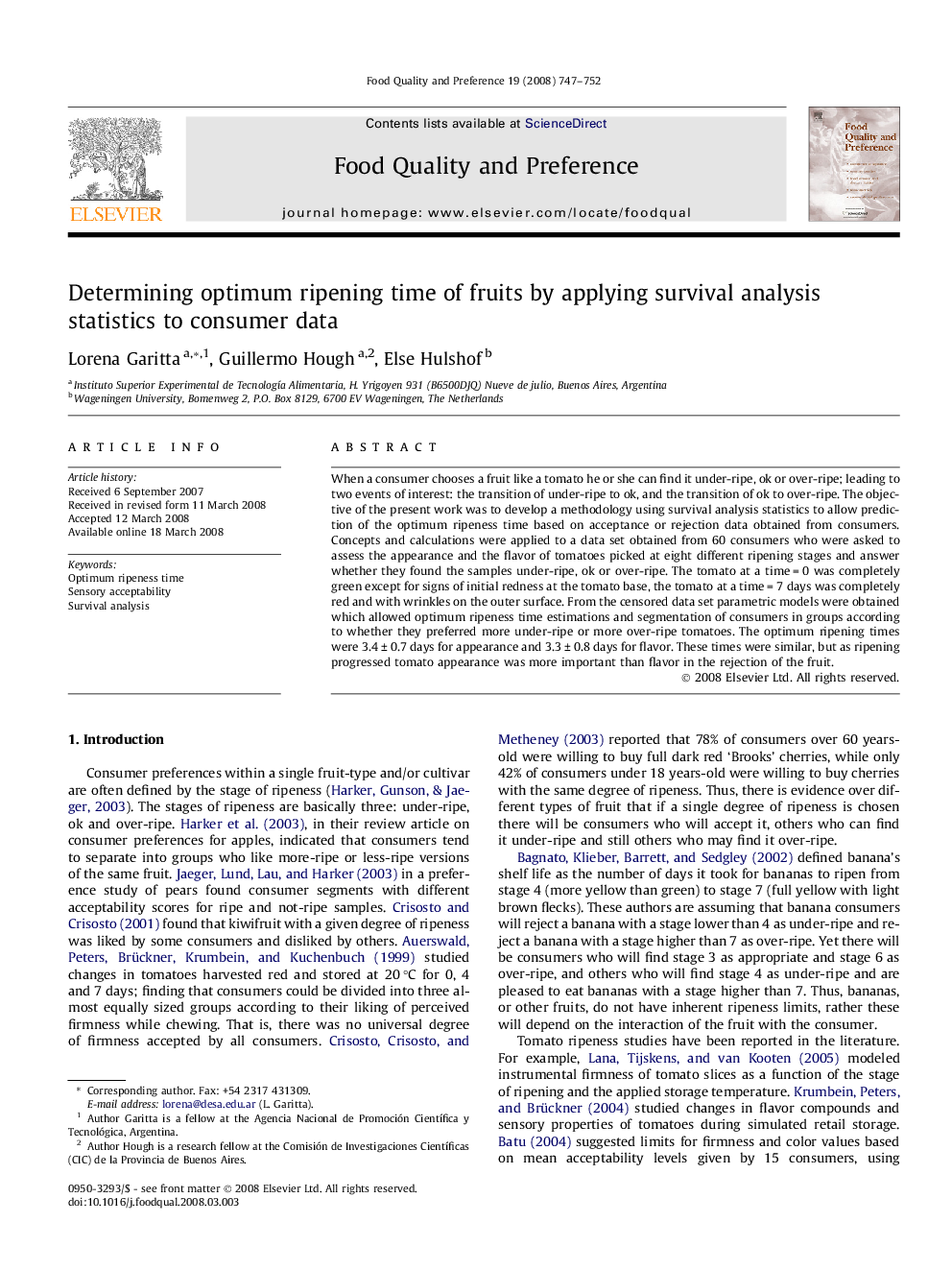| Article ID | Journal | Published Year | Pages | File Type |
|---|---|---|---|---|
| 4318026 | Food Quality and Preference | 2008 | 6 Pages |
When a consumer chooses a fruit like a tomato he or she can find it under-ripe, ok or over-ripe; leading to two events of interest: the transition of under-ripe to ok, and the transition of ok to over-ripe. The objective of the present work was to develop a methodology using survival analysis statistics to allow prediction of the optimum ripeness time based on acceptance or rejection data obtained from consumers. Concepts and calculations were applied to a data set obtained from 60 consumers who were asked to assess the appearance and the flavor of tomatoes picked at eight different ripening stages and answer whether they found the samples under-ripe, ok or over-ripe. The tomato at a time = 0 was completely green except for signs of initial redness at the tomato base, the tomato at a time = 7 days was completely red and with wrinkles on the outer surface. From the censored data set parametric models were obtained which allowed optimum ripeness time estimations and segmentation of consumers in groups according to whether they preferred more under-ripe or more over-ripe tomatoes. The optimum ripening times were 3.4 ± 0.7 days for appearance and 3.3 ± 0.8 days for flavor. These times were similar, but as ripening progressed tomato appearance was more important than flavor in the rejection of the fruit.
